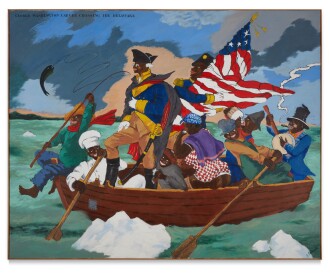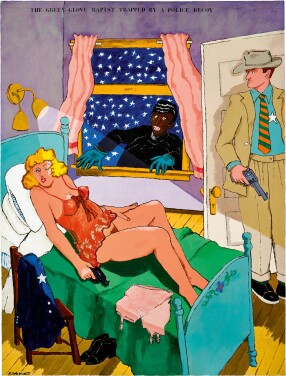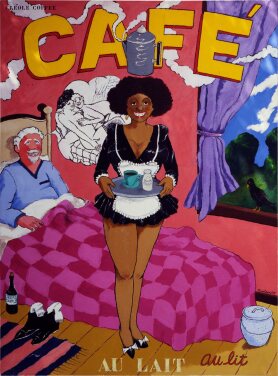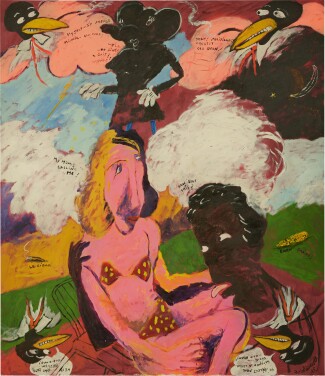Works by Robert Colescott at Sotheby's
Robert Colescott Biography
American artist Robert Colescott is best known for his satirical genre paintings composed of vibrant color, joyful forms and pained figures. His paintings explore the interconnections between race and gender identity, and astutely critique the treatment of African Americans in the United States.
Born in Oakland, California, in 1925 to a pianist mother and a classical violinist father, Colescott played instruments as a child, but eventually chose visual art in part due to the encouragement he received from family friend and influential artist Sargent Claude Johnson. After serving in World War II, Colescott completed his BA degree in drawing and painting in 1949, and an MA in 1952 at University of California, Berkley, and spent a year studying in Paris, France, with friend Fernand Léger. His first major exhibitions in California in the early 1960s launched his career, and he spent much of the decade traveling in Egypt, which had a profound effect on his subsequent work. In the mid-1970s, he began producing works that sharply reimagined iconic paintings from Western art historical canon; he reworked Édouard Manet’s Dejeuner sur l’Herbe (1862–63), Vincent van Gogh’s Potato Eaters (1885), Jan van Eyck’s Arnolifni Portrait (1434), and many other famous paintings by white male artists. In these reconfigurations, some or all personages were reimagined as black figures to satirize historical understandings of race, and to emphasize the disparity of conditions for contemporary black Americans. One of his best-known works, George Washington Carver Crossing the Delaware: Page From an American History Textbook (1975), portrays prominent black agricultural chemist George Washington Carver as the Revolutionary war hero, surrounded by Aunt Jemima-like cooks and banjo playing black figures, at once mocking the mythmaking of white American forefathers and hateful stereotypes of African Americans.
Colescott had his first retrospective in 1987 at the San Jose Museum of Art. In 1997, Colescott became the first African American artist to represent the United States at the Venice Biennale in an exhibition that traveled across the country to the Walker Art Center, Minneapolis, the Portland Art Museum, the Contemporary Arts Center, New Orleans, and many other museums. His works can be found at the Museum of Modern Art, New York, the National Gallery, Washington, DC, and the Walker Art Center, among others.












